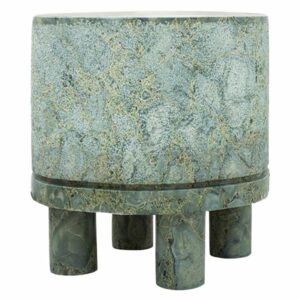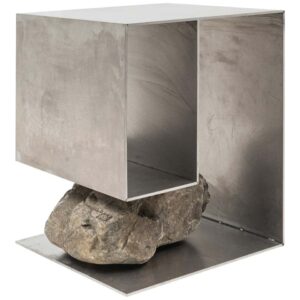
Melissa Lee

Melissa Lee founded her multidisciplinary design firm, Bespoke Only, in 2012. Bringing both her multicultural upbringing, academic background in psychology along with a former career in luxury goods, Lee’s personal and professional experiences enriches and sets apart Bespoke Only’s practice, resulting in work with an exceptionally layered quality and depth. These experiences now shape the way she works with clients at Bespoke Only, which is based out of Brooklyn, New York. Lee’s ability to bridge the realms of the human psyche and the world of design on an emotional level within spaces is evident through her work. Her design ethos lies in a firm curiosity to the human experiences with their environments, while acting as a custodian to the dwelling with a timeless touch. A Parsons School of Design alum, Lee has an affinity for elevating architectural elements and integrates her modernist aesthetic with a quiet yet strong sensibility.
Lee perceives each space as a living, evolving entity shaped and transformed through intimate interactions over time. As an immigrant and first generation American herself, there’s an earnest sense of belonging and acceptance Lee creates in her work.
1. Could you tell us how your journey into interior design started?
It happened quite naturally. It’s not necessarily interior design itself that I was interested in but rather a way for me to observe human life up close and a medium to touch it intimately. I studied psychology and the idea of better understanding the human psyche underneath the surface and witnessing its evolution over time always felt innate. There’s hardly anything compared to interior design that presents that opportunity as naturally and genuinely.
2. When you look back now, do you think there has been a defining moment in your career?
I don’t think there was one defining moment per se – just like the path itself along the way was by all means not linear. It’s a series of micro-moments and various trials – each small, seemingly insignificant decision influencing the next and one day, I realized every stumble and fall led me to exactly where I need to be.
3. You talk about the idea of “respect for the negative space” in your projects, which is a beautiful concept. Could you please elaborate on this idea and tell us what are some of the steps you take to achieve this negative space?
It goes back to understanding and respecting that life itself is ever-evolving and organic. The impermanence of it requires space to unfold continuously. We make a conscious effort to reserve room for that evolution when approaching any space. When a flower bed is planted to the brim, there’s simply no room for the plants to breathe and grow.
4. What do you think is the linchpin of successful interior design?
To me, it’s about humility and restraint. Not inserting too much of my own POV into another person’s life. It’s remembering the most important element of a great space is creating the comfort where people feel most at ease in their own skin.
5. How do you start your projects? Do you usually start with a certain element of design or a keyword? Could you maybe walk us through how you would tackle a new project?
We always start with a deep dive – trying to understand as much as possible about our client’s lifestyle – how they start and end their day, move around in their home and what the timeline is like. We then try to trace that footprint in the space ourselves – this step allows us to observe how the light moves at different points of the day and how the flow reacts to these activities in reality. From there, we create a plan to accommodate and serve these unique needs with an all-around consideration.
6. What was one of the hardest learned lessons in your practice?
Management is an on-going learning process for me and unlike design, it does not come naturally. From the moment we hired our first full-time employee, my mentality as a creative and a business person has fundamentally shifted. It’s a balancing act between the freedom I always crave and the responsibilities I now carry. It’s a work in progress and I am learning every day.
7. What would be the ideal project or ideal client for you, for your vision?
Someone who respects design and provides the proper trust for those they hire!


8. Do you have a mantra that encapsulates your taste in interior design?
A space that feels like it’s always been there.
9. Is there a design piece / an article you cannot live without, or you’d like to add to every project you do?
Not any specific piece but we certainly love antiques, for the inimitable warmth from its patina, which gives any room an instant layer and story.
10. You work on both residential and hospitality projects, and have completed multiple impressive interiors. Could you tell us about one of your favorite projects (maybe challenging but enriching at the same time) and what makes it special?
We recently completed the renovation of our new HQ – it’s the lower duplex that’s been used as a rental in the 2-family brownstone where I reside with my family. Bespoke Only was born at this house and we grew from my dining table, to the attic and this year, finally moved into its own space. It felt like we finally graduated from our garage start-up era and became real adults. On the office moving day, I was reminded by my phone album that it marks the 10th year anniversary since the closing day. I still remember the day vividly when we walked through the empty house and all I was thinking is one day I will fill it with my company and a team that I love working with. It didn’t happen overnight but we’re here now.
11. What advice would you give to beginner designers?
It gets rough at times and dusty always. But the satisfaction of bringing a vision to life and sharing that specific picture inside of your head with the world is simply irreplaceable. Design often feels lonely but the business of it makes the solitary act a shared venture. That is something so special and I wouldn’t trade it for anything.
12. What are your 3 favorite pieces from the Philia Collection?
-
Diabase Volcanic Rock Side Table, Unique Hand-Sculpted, Rooms
Proportions of Stone Stool by Lee Sisan
€3,96013. Finally, what are your upcoming projects? Anything you’d like to share or add to the interview?
We’re wrapping up quite a few long-term projects and will be photographing them all this summer. It’s so exciting to finally see it all come together!







